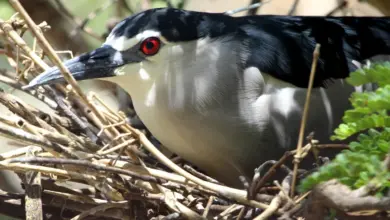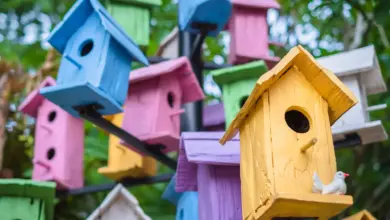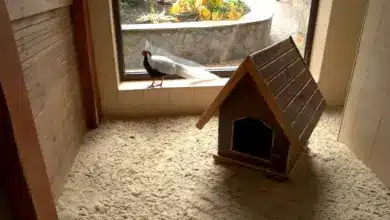Trumpeter Swan breeding forms pair bonds when they are two to four years old and usually pairs stay together throughout the year, including moving together in migratory populations.
However, some that lost their mate did not mate again.
Trumpeter Swan Breeding Species Page
If a male pairs up with another younger female, she will typically join him on his territory. If he pairs up with an older female, he will go to hers. If a female loses her mate, she will usually pair up quickly – usually choosing a younger male.
If a male pairs up with another younger female, she will typically join him on his territory. If he pairs up with an older female, he will go to hers.
If a female loses her mate, she will usually pair up quickly – usually choosing a younger male.
Bonded pairs tend to remain together year-round; however, outside the breeding season, they are highly social and often congregate with large numbers of other swans. During the breeding season, pairs will, however, aggressively defend their territories.
Mid-to-late February through April, Trumpeter Swans will migrate to their breeding territories in northwestern and central North America, with the largest numbers of breeding pairs being found in Alaska.
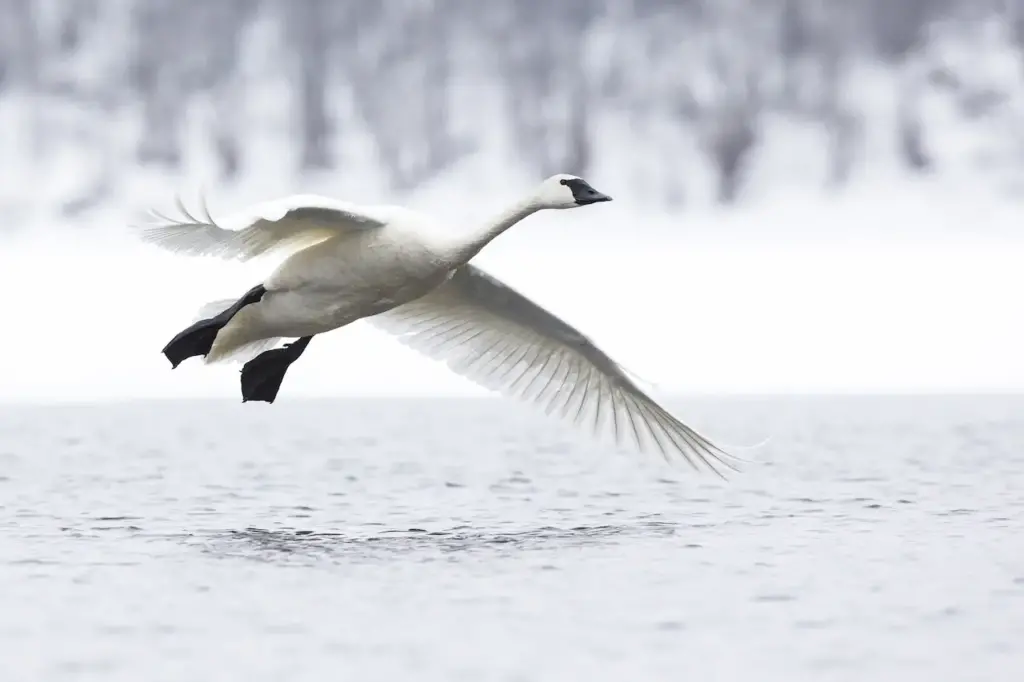
Breeding
The Trumpeter Swans breeding in freshwater marshes, ponds, lakes and along slow-flowing rivers.
Most Trumpeter Swans find their mates before the age of 2 years – usually during the winter season. Even though some may nest for the first time when they are two years old, most won’t start until they are 3 to 7 years old.
Trumpeter Swans are believed to form lifelong pair bonds. However, if one mate dies, the survivor will find another mate.
Upon arrival in the breeding territory, the pair will engage in courtship behaviour, which includes bobbing their heads and facing each other with quivering wings.
Nesting usually occurs from April through July.
They will nest in areas with ample food supply, shallow and uncontaminated water, and few disturbances. Usually, only one pair nests on a single body of water. These nesting territories range from 6 to 150 acres in size and are often located near where the female was hatched. The female chooses the nesting area, while the male defends it. Swan pairs are most likely to return to the same nesting site if they were able to raise young successfully there in the past.
Nest
The Trumpeter Swan Breeding and nesting season — commencing with the building of the nest to the winter migration – is one of the longest for North American birds. The breeding season is timed to take advantage of readily available food supplies.
Their slightly elevated nest sites are usually surrounded by water. Their nests are often placed on small islands, old beaver houses, dams or muskrat mounds; on emergent vegetation that is either floating or anchored to the bottom of the water. Breeding pairs will either construct a new nest or repair the nest that they have used in previous seasons.
Nest-building begins in mid-April and may take up to two weeks. The male uprootsaquatic vegetation, grasses and sedges, and transfers it to the female, who will first pile it up high and then use her body to form a depression to place her eggs in. It’s shaped like a large open bowl. The interior is lined with down and feathers.
Once completed, the nests may reach a diameter of up to 11.5 feet (1 to 3.5 meters). The nest is often surrounded by a 20 to 30-foot (6 to 9-meter)ditch – usually filled with water to make it more difficult for mammalian predators to access the nest.
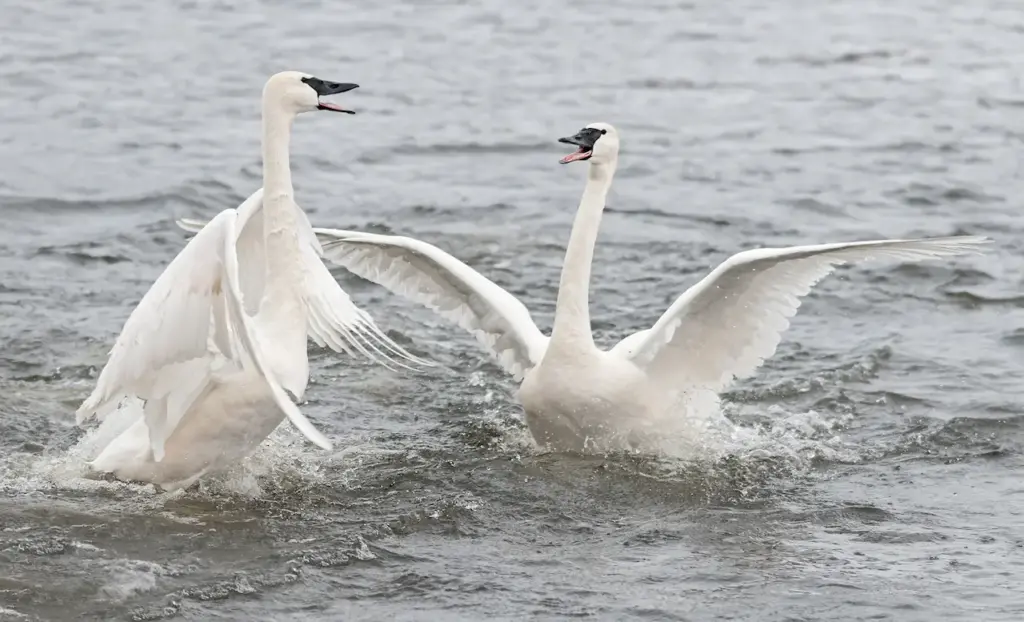
Eggs / Incubation
Beginning in late April to June, the female usually starts laying eggs – often before the nest is even completed. Eggs are laid every other day until the clutch is complete.
The average clutch consists of 2 to 10 creamy white eggs but in most cases 5. If it is the female’s first clutch, she is likely to lay fewer eggs and these eggs are more likely to be infertile.
An egg is about 2.9 in (73 mm) wide and 4.5 in (113.5 mm) long; and weighs about 11.3 oz or 320 g.
The female starts brooding the eggs (also referred to as the “incubation process”) when a clutch is complete. The eggs are incubated for about 32 to 37 days. The male remains close to the nest to protect the brooding female and chicks against intruders and predators. On rare occasions, the male may help incubate the eggs.
During the incubation period, the female only leaves the nest for short periods to feed herself or to bathe and preen her feathers. However, before leaving she often covers the eggs with nesting material to conceal them.
The male will also stay close to the nest to deter predators. When intruders are successfully deterred, the adults generally perform a “victory display”.
This “dance” is similar to their courtship display and consists of facing each other while quivering their wings and trumpeting loudly. These swans may lay a second clutch if the first eggs or cygnets are lost.
